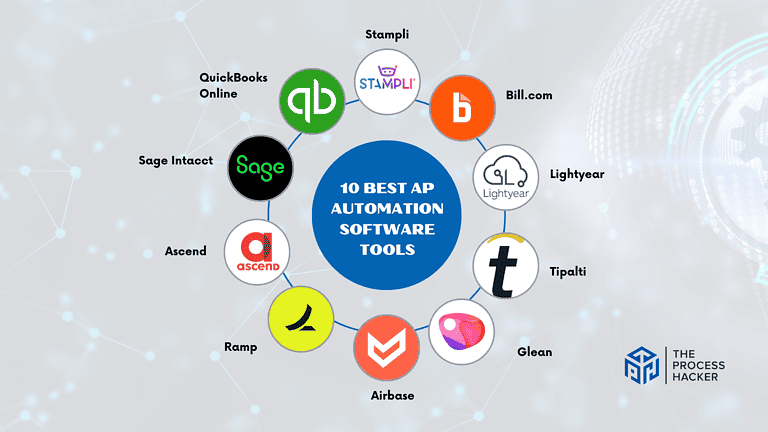How to Conduct an Impactful Annual Business Review With Your Team
Feeling overwhelmed by the day-to-day grind, unable to see the bigger picture of your business? Getting caught up in the daily whirlwind of tasks and deadlines is easy. But taking a step back to assess your company’s performance is crucial for long-term success.
Imagine having a clear snapshot of your company’s performance and a roadmap for future success. This is where an annual business review comes in. It provides an invaluable opportunity to evaluate what’s working, identify areas for improvement, and set strategic goals for the year ahead.
An effective annual business review can transform your strategy and boost your company’s growth. Think of it as a tune-up for your business engine, ensuring everything runs smoothly and efficiently.
Learn how to conduct a powerful annual business review, even if you’re pressed for time. In this article, we’ll guide you through the process step-by-step, providing practical tips and actionable insights to make your next annual business review successful.
What is an Annual Business Review?
The annual business review comprehensively assesses your company’s performance over the past year. It examines your operations, marketing, and financial data from last year and the business environment to determine the appropriate objectives, action plans, and timelines for the future.
This review process requires input from your management team, who will be responsible for implementing any necessary changes.
Reasons You Need to Master the Annual Review Process
The annual review isn’t just another task to check off your list. It’s a powerful tool that can significantly impact the trajectory of your business. Here’s why it’s so crucial:
Gain a Complete Picture
To truly benefit from an annual business review, you need a holistic view of your team’s performance and the challenges you face. Here’s how you can gain that complete picture:
- Comprehensive Data Collection: Start with gathering data. This includes sales numbers, customer feedback, team performance metrics, and other relevant data reflecting your team’s efforts over the past year.
- Inclusive Feedback: Make sure to include feedback from all team members. This approach promotes transparency and provides insights you might overlook without considering top-level feedback.
- SWOT Analysis: Conduct a SWOT analysis to identify strengths, weaknesses, opportunities, and threats. This will help you understand where you stand in the market and how your internal capabilities can be aligned with external opportunities.
- Forward-Looking Goals: Use the insights gained from your review to set realistic yet ambitious goals for the next year. These should challenge your team and be achievable with the right strategies and resources. Some examples are trying to cut costs, produce more output, set clear team communication, or enhance client relationships.
Pinpoint Opportunities
A key aspect of conducting an impactful annual review is your ability to pinpoint opportunities that can catapult your team and business to new heights. Here’s how you can effectively identify and leverage these opportunities:
- Market Trends Analysis: Stay ahead by analyzing emerging trends within your industry. This will provide a competitive edge and help you adapt to changes more swiftly.
- Feedback Loops: Regularly gather and analyze feedback from all team members. This direct line of communication uncovers hidden opportunities for innovation and improvement.
- Skill Assessments: Evaluate your team’s skills and identify areas for training or updates. This will ensure your team remains competent of meeting new challenges.
- Resource Allocation: Assess the current allocation of resources and determine if they could be optimized for better efficiency and greater output.
Get Everyone on the Same Page
An essential outcome of an effective annual business review is getting everyone on the same page, which involves clear communication, shared understanding, and unified goals. Here’s how you can ensure this:
- Clear Communication: Present the past year’s data clearly, including achievements and setbacks. Use this data to highlight how individual contributions have impacted broader business goals.
- Inclusive Discussion: Encourage an open dialogue where every team member can share their perspectives and insights. This inclusion fosters a sense of belonging and commitment to shared objectives.
- Align Goals with Roles: Ensure each team member’s goals align with the business objectives. This alignment helps clarify their roles and your expectations of them.
- Consensus on Objectives: Work collaboratively to set realistic and challenging goals for the next period. Gaining consensus enhances commitment and ensures that everyone is moving in the same direction with a clear understanding of what success looks like.
Focusing on these elements during your annual business review ensures that every team member is aligned with the company’s vision and objectives. This unity is crucial for implementing strategies effectively and achieving collective success.
Make Informed Decisions
One of the most crucial aspects of conducting an annual business review is the ability to make informed decisions that will positively impact the future of your business. Here’s how you can ensure that your choices are well-grounded and effective:
- Data-Driven Insights: Utilize comprehensive data from the past year to inform your decisions. This includes performance metrics, customer feedback, and financial results. By basing your decisions on data, you minimize bias and enhance objectivity.
- Collaborative Input: Engage with your team to gather diverse insights and perspectives during the review. This collaborative approach enriches the decision-making process and ensures that decisions are more widely accepted and supported.
- Scenario Planning: Consider different scenarios and how potential decisions could play out. This helps you understand the implications of each decision and prepare for various outcomes.
- Strategic Prioritization: Identify and prioritize areas requiring immediate attention or significantly impacting your business objectives. This ensures that resources are allocated efficiently and effectively.
By mastering these elements, you’ll conduct an impactful annual review and position your team for success in the upcoming year. The goal is to leave the review with clear objectives, a deep understanding of your team’s capabilities, and a robust strategy for moving forward.
This is how you turn insights into action and ensure that your team is not just reacting to changes but actively shaping the future.
Motivate Your Team
Sharing the results of your annual review, good and bad, is a powerful way to energize your team. Acknowledging successes boosts morale and reinforces positive actions. Addressing challenges head-on shows a commitment to improvement, encouraging everyone to contribute to solutions.
When you involve the entire team in this process, you’ll cultivate a sense of ownership and engagement, driving them to achieve even greater things together.
How to Conduct an Effective Annual Business Review
An effective annual business review is crucial for your organization’s continued success and growth. This detailed guide provides a step-by-step approach to ensure you cover all vital aspects of the review process, helping you and your team confidently prepare for the upcoming year.
Step 1: Gather Data and Set the Agenda
To kick off a successful review, you’ll need to collect key documents and data. Gather financial reports, sales data, and operational metrics highlighting the past year’s performance. It’s also important to review employee performance review records and feedback to get a complete picture of your team’s achievements and areas for improvement.
Once you have all the necessary information, create a comprehensive agenda for the review meeting. This agenda should include specific items for discussion and allow time for open dialogue, ensuring that all team members have the opportunity to contribute.
Step 2: Assess Financial and Operational Performance
Next, dive into the financials. Analyze your revenue, profits, and expenses to gauge your financial health. It’s equally important to review your operational efficiency and productivity metrics to identify any processes that could be streamlined.
Also, assess your market position and competitive landscape. Understanding where you stand about your competitors can provide valuable insights into potential areas of opportunity or necessary adjustments in strategy.
Step 3: Review Employee and Team Performance
Evaluating individual performances is essential. Review each team member’s contributions over the past year and provide constructive feedback. Assessing team dynamics and overall productivity is also crucial; this can help identify whether the collective efforts align with your business goals.
Additionally, recognize any skills gaps or training needs. Planning for future training or development programs can greatly enhance your team’s capabilities and ensure everyone is equipped to meet upcoming challenges.
Step 4: Set Goals and Strategies for the Coming Year
With all this information, you’re well-prepared to set goals and strategies for the next year. These should be specific, measurable, achievable, relevant, and time-bound (SMART). Setting clear goals directs your team’s efforts and motivates them to achieve shared objectives.
Following these steps ensures that your annual business review is thorough and effective, setting the stage for a successful business year ahead.
Key Considerations for a Successful Annual Business Review
Thoroughness and objectivity are crucial for an effective annual review. Allocate sufficient time for the process and involve key stakeholders. Focus on both quantitative data and qualitative feedback to get a complete picture of your business’s health.
Taking it to the Next Level: Integrating Strategic Planning
Your annual review isn’t just about looking back; it’s a springboard for the future. Take those hard-earned insights and weave them into your strategic planning.
Refine your company’s vision, mission, and long-term goals. Explore tools like SWOT analysis or balanced scorecards to deepen your strategic thinking.
Alternatives to the Traditional Annual Business Review
While the annual review holds its place, feel free to explore alternatives. Consider quarterly check-ins for a more dynamic approach. Or a continuous performance management system aligns better with your company’s rhythm. If your business operates on a project basis, tailored annual reviews might be the answer.
Remember, the key is to find the right approach for your business. The goal remains the same: clearly understanding where you stand and creating a roadmap for a thriving future.
Final Thoughts on Annual Business Reviews

Mastering the art of annual business reviews is crucial for small business owners looking to achieve growth and success.
From setting clear goals to assessing team performance, conducting these reviews allows you to take control of your company’s direction moving forward. Remember, consistency is key when implementing these techniques—make them a regular part of your business strategy and see the benefits unfold.
Remember the importance of your approach being thorough, objective, and forward-thinking. As Gail Sheehy once said, “Without a goal to work toward, we will not get there.” So, let these annual business reviews be your guiding light toward continuous improvement and success.
Plus, with the ever-changing business landscape, these reviews are a necessary reality check to ensure you stay ahead of the game. So go forth confidently, apply these techniques, and watch as your business reaches new heights.
Thank you for reading, and here’s to an even more successful year!







